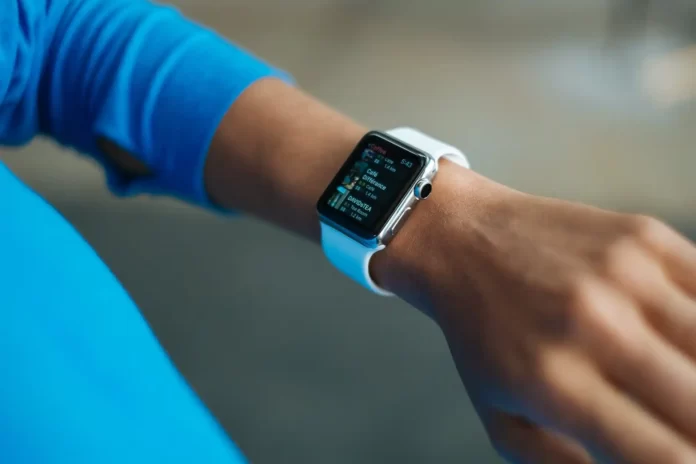In the era of wearable technology, smartwatches and fitness bands have become ubiquitous companions for tracking our daily activities and monitoring our health. However, beneath the sleek surface lies an unexpected hotspot for harmful bacteria. As these devices constantly cling to our wrists, they create an environment conducive to the accumulation of germs. Understanding this hidden danger is essential, and adopting preventive measures can ensure that our trusted wearables don’t become breeding grounds for potentially harmful microbes.

The Bacterial Breeding Ground:
Recent studies have shed light on the unsettling reality that our smartwatches and fitness bands are teeming with bacteria. The combination of warmth, moisture, and constant skin contact creates an ideal breeding ground for various microorganisms. Sweat, dead skin cells, and environmental factors contribute to the formation of a microbial haven on the surfaces of these devices.
Common Bacteria Found
The bacteria found on smartwatches and fitness bands are not just harmless bystanders. Staphylococcus aureus, a bacterium known for causing skin infections, and Escherichia coli (E. coli), a bacteria associated with gastrointestinal issues, are among the common inhabitants. These findings underscore the need to address the hygiene of our wearables to prevent potential health risks.
Prevention Tips

- Regular Cleaning: The first line of defense against bacterial buildup on smartwatches and fitness bands is regular cleaning. Use a mild, non-abrasive cleanser to wipe down the device and its straps. Pay attention to areas where the device makes direct contact with the skin. Cleaning not only removes visible dirt but also eliminates invisible bacteria that may be lurking.
- Remove During Workouts: While it might seem counterintuitive, removing your smartwatch or fitness band during intense workouts can be beneficial. Not only does it allow your skin to breathe, but it also prevents excessive sweat from accumulating on the device. Consider using a fitness tracker with a detachable strap for easy cleaning or opt for wearables designed for water resistance.
- Choose Hypoallergenic Materials: Pay attention to the materials used in the construction of your wearable. Opt for hypoallergenic and non-irritating materials that are less likely to foster bacterial growth. Silicone, for example, is a popular choice for straps due to its resistance to moisture and ease of cleaning.
- Rotate Between Multiple Bands: If your smartwatch or fitness band allows for interchangeable straps, consider having multiple bands that you can rotate. This not only adds a fashion element to your wearables but also allows you to regularly clean and dry each band, reducing the chances of bacterial buildup.
- Hand Hygiene: Practicing good hand hygiene is a simple yet effective measure to prevent the transfer of bacteria. Wash your hands thoroughly before handling your smartwatch or fitness band, especially if you’ve been in environments where germs are prevalent. This reduces the likelihood of introducing harmful bacteria to your wearable.
- Avoid Sharing Wearables: Sharing is caring, but when it comes to wearables, it’s best to keep them personal. Avoid sharing your smartwatch or fitness band with others to minimize the risk of cross-contamination. Each person’s skin carries a unique microbiome, and sharing devices increases the chances of introducing unfamiliar bacteria.
- Regular Device Checks: Periodically check your smartwatch or fitness band for any signs of wear, tear, or damage. Cracks and crevices can become hiding spots for bacteria, making thorough cleaning more challenging. If you notice any issues, address them promptly to maintain the hygiene of your device.
- The Health Implications: The implications of bacterial colonization on smartwatches and fitness bands extend beyond mere discomfort. For individuals with compromised immune systems or pre-existing skin conditions, the risk of infection becomes more pronounced. Skin irritation, redness, and itching are common consequences of prolonged exposure to bacteria, and in severe cases, more significant health issues may arise. Recognizing the potential health risks emphasizes the importance of proactive measures to maintain the cleanliness of these devices.
- Innovation in Wearable Hygiene: Acknowledging the hygiene challenges associated with wearables, manufacturers are taking steps to innovate in this space. Some devices now feature antimicrobial coatings or materials designed to inhibit the growth of bacteria. While these enhancements contribute to a cleaner device, they do not replace the need for regular user-driven maintenance. Users should remain vigilant in adopting personal hygiene practices to complement these technological advancements.
- Educating Users: An essential aspect of mitigating the bacterial risk associated with wearables is user education. Manufacturers can play a pivotal role in raising awareness about proper device hygiene, providing clear instructions on cleaning procedures, and promoting responsible usage. Additionally, integrating reminders or alerts within the wearable’s software to prompt users for periodic cleaning can reinforce these healthy habits.
- The Future of Wearable Health: As wearables continue to evolve and play an increasingly prominent role in health monitoring, addressing hygiene concerns becomes integral to their success. The intersection of technology and health demands a holistic approach, considering not only the device’s functionality but also the well-being of the user. The integration of self-cleaning mechanisms, advanced materials, and user-friendly designs holds promise for the future of wearables, ensuring that they remain reliable tools for health and fitness without compromising hygiene.
- Community Engagement: Creating a community dialogue around wearable hygiene fosters a collective understanding of the issue. Social media platforms, forums, and health communities can serve as valuable spaces for users to share their experiences, tips, and best practices in maintaining clean wearables. Establishing a sense of communal responsibility encourages individuals to prioritize device hygiene and establishes a culture of shared knowledge.

While the revelation of smartwatches and fitness bands harboring harmful bacteria may be disconcerting, it presents an opportunity for users to become more conscientious about wearable hygiene. Implementing simple yet effective preventive measures, staying informed about device innovations, and fostering a community-driven approach can collectively contribute to a healthier and more hygienic wearable experience. As we continue to embrace the symbiosis of technology and health, let’s ensure that our wearables not only enhance our lives but also safeguard our well-being.



